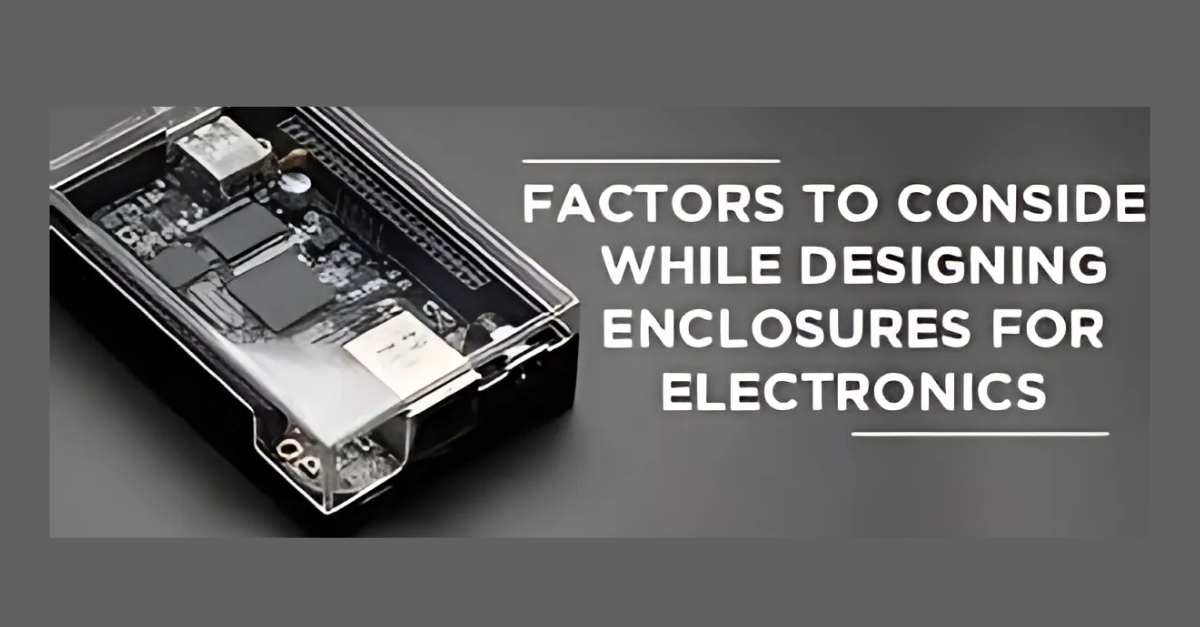Electronic enclosures play a crucial role in protecting electronic devices from environmental factors that could damage their internal components. Here are the key ways in which they provide protection:
1. Protection Against Moisture and Water
- Sealing and Gaskets: Enclosures are designed with seals and gaskets that prevent moisture, rain, and water from entering the enclosure. This is especially important in outdoor or marine environments where exposure to water can cause short circuits or corrosion of sensitive components.
- IP Rating (Ingress Protection): Enclosures often have an Ingress Protection (IP) rating, which defines the level of protection against the intrusion of dust and water. For example, an IP67 rating means the enclosure is dust-tight and can withstand immersion in water up to a certain depth and time.
- Waterproof Enclosures: For applications in extremely wet conditions, such as underwater or rain-soaked areas, enclosures are made waterproof to protect internal electronics from water ingress.
2. Protection from Dust and Contaminants
- Dustproof Design: Enclosures can be sealed to prevent the entry of dust and dirt, which could interfere with the performance of the internal components. For instance, in dusty industrial environments, maintaining a dust-free environment inside the enclosure is crucial to avoid overheating or clogging.
- Sealed Vents and Filters: Many enclosures incorporate vents with filters that allow for airflow but prevent the ingress of dust particles. This ensures that the internal electronics remain clean and function optimally.
3. Protection from Temperature Extremes
- Thermal Management: Enclosures are designed to either insulate against excessive heat or facilitate the dissipation of heat generated by internal components. Some enclosures come with built-in heat sinks, fans, or even liquid cooling systems to prevent overheating.
- Thermoelectric Cooling: In some cases, enclosures incorporate thermoelectric devices to actively manage internal temperatures, especially for sensitive electronics that require stable operating temperatures.
- Heat Resistant Materials: Enclosures made from heat-resistant materials, such as high-temperature plastics or metals, ensure that internal components are protected from high heat levels in industrial or outdoor environments.
4. Protection from Corrosive Substances
- Corrosion-Resistant Materials: In environments where corrosive substances (e.g., chemicals, saltwater) are present, enclosures are made from corrosion-resistant materials like stainless steel, aluminum, or special coatings to prevent degradation of the enclosure and the internal electronics.
- Sealed Enclosures: Some enclosures are completely sealed to prevent exposure to chemical fumes or gases, which can cause damage to sensitive components or lead to rust and corrosion.
5. Protection from Electromagnetic Interference (EMI)
- Shielding: Some enclosures, especially those used for high-frequency or sensitive electronic systems, are designed with built-in electromagnetic shielding to prevent electromagnetic interference (EMI) from external sources. Materials such as metal or conductive coatings are often used to block or absorb electromagnetic waves.
- Faraday Cages: Enclosures with metal casing can also act as Faraday cages, which block external electric fields and electromagnetic radiation, protecting internal components from unwanted interference.
6. Protection from Physical Impact and Vibration
- Durable Materials: Enclosures are often made from tough, impact-resistant materials such as polycarbonate, aluminum, or steel to protect the internal electronics from physical damage due to drops, impacts, or rough handling.
- Shock Absorption: Some enclosures include shock absorbers, cushioning, or rubber mounts to reduce the impact of vibration or sudden movement, protecting sensitive internal components.
- Sturdy Construction: For high-risk environments like construction sites or manufacturing plants, enclosures are constructed to withstand heavy mechanical stress and provide reliable protection to the electronics inside.
7. Protection from UV Radiation
- UV-Resistant Materials: Enclosures used in outdoor applications are often made from UV-resistant materials or coated with UV-protective finishes to prevent degradation due to prolonged exposure to sunlight. This helps prevent the enclosure from becoming brittle and ensures that the internal components remain protected from UV damage.
8. Protection from Explosive Atmospheres
- Explosion-Proof Enclosures: In hazardous environments, such as oil refineries or chemical plants, electronic enclosures are designed to be explosion-proof. These enclosures can withstand internal explosions without igniting the external environment. They are made with materials and construction methods that contain and dissipate any internal explosion safely.
- ATEX/IECEx Certified Enclosures: These enclosures comply with safety standards such as ATEX (for explosive atmospheres) or IECEx (International Certification Scheme for Explosive Atmospheres) to ensure safety in volatile environments.
Conclusion:
Electronic enclosures ensure protection against a wide range of environmental factors by offering features like sealing, material selection, temperature regulation, and physical durability. The proper design and choice of materials for an enclosure depend on the specific requirements of the application, ensuring that the electronics inside remain safe, functional, and protected from harsh conditions.
Hashtags
#EnvironmentalProtectionEnclosures #WeatherproofElectronicEnclosures #IPRatedEnclosures #WaterproofEnclosures #DustproofEnclosures #CorrosionResistantEnclosures #MetalEnclosuresForProtection #PlasticEnclosuresForElectronics #SealedEnclosures #OutdoorElectronicEnclosures #RuggedEnclosuresForElectronics #CustomizedElectronicEnclosures #IP65Enclosures #IP67RatedEnclosures #IP68Enclosures #IngressProtectionRating #IPStandardsForEnclosures #WaterResistantEnclosures #TemperatureControlledEnclosures #HumidityResistantEnclosures #ThermalProtectionForElectronics #EnclosuresForExtremeTemperatures














